All about plums
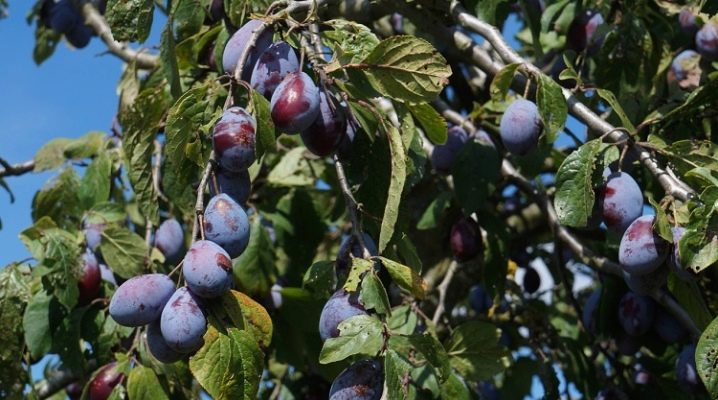
People began to plant plums in their gardens a long time ago. These trees are quite unpretentious, so they can be grown on their site even for busy summer residents.
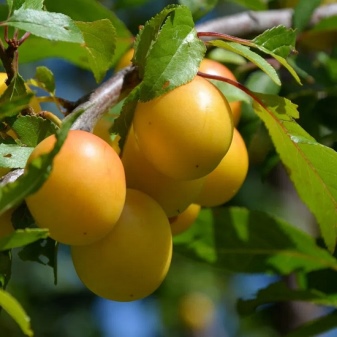
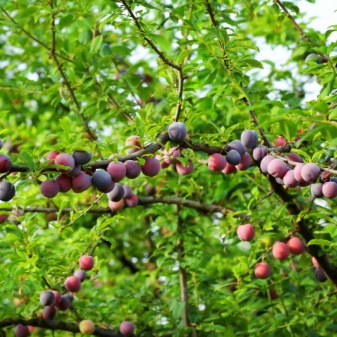
Description
Plum is a cultivated plant that belongs to the Pink family. It adapts well to any climate and quickly takes root in a new place. The tree usually reaches a height of 5-15 meters. His life expectancy is relatively short. Typically, a tree lives for about 25 years. At the same time, the plum bears fruit only for 10-12 years.
The tree has a fairly strong root system. Its leaves are elongated. Plum blossoms in the second half of spring. After the end of flowering, the fruits are tied. They can be not only blue or purple, but also red or yellow. As a rule, plums are round or slightly elongated.
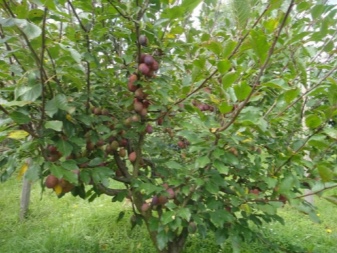
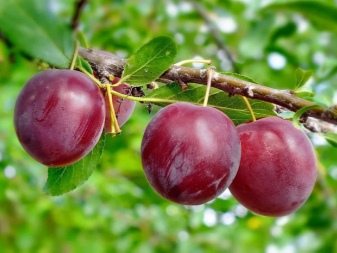
The best varieties
Now there are more than 200 varieties of plums. For planting on a home plot, it is worth choosing proven plants that are highly appreciated by most gardeners.
- "Red ball". This variety was bred relatively recently. The tree is small in size. It grows in height up to 3 meters. The fruits that appear in summer have a red tint and a sweet and sour taste.
- "Sapa". This is a dwarf plant that grows up to one and a half meters in height. The variety was obtained after crossing plum and cherry. The tree bears fruit very abundantly. The crop can be harvested from it as early as the second year after planting. The fruits of this plum have a dark burgundy color. They taste like thorns. Most often, the harvested fruits are used to make delicious wine.
- "Manchurian Beauty". This plant variety is widespread in the Far East. A tree planted on the site begins to bear fruit 3 years after planting. The fruit has a rich yellow-orange color. They usually appear at the end of summer.
- "Peach". This plum has poor winter hardiness. Therefore, it is best suited for cultivation in the southern regions of the country. The plant begins to bear fruit at the 5th year of life. The yield of the tree only increases every year.
- "Victoria"... These trees are best planted on the sunny side of the site. They begin to bear fruit 3-4 years after planting. The fruits have a pleasant yellow-red color and rich aroma.
- "Hungarian". This variety is drought tolerant. The plant has been pleasing the owners of the site with rich harvests for many years. The fruits are purple in color. Their flesh is yellow, juicy and very sweet.
- "Smolinka". This is an early variety of plum. The average weight of fruits that appear on the branches is 35 grams. Plums are purple in color and have a delicate yellow flesh. It is very easy to care for such a tree, because it is not at all fastidious.
Many gardeners prefer to plant several different varieties of plums at once.
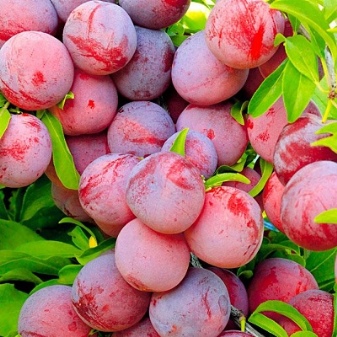
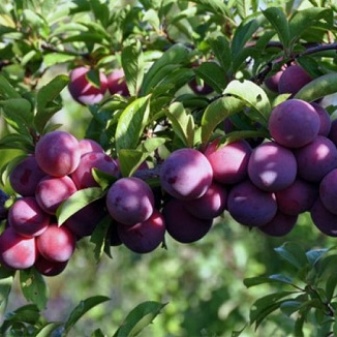
What kind of soil does he like?
Before planting a plum on your site, you should understand what kind of soil this tree loves. In general, the plants are quite unpretentious. Plums react negatively only to acidic and alkaline soil. To increase yields, oval-shaped trees are planted in clay soil. Plums with round fruits prefer black soil. The depth of the groundwater is also important. They should not be too close to the roots.

How to plant?
For planting on your site, you should choose healthy seedlings. They should be bought in proven nurseries. When choosing, you need to carefully examine the rhizome.The roots must be healthy, with no infected or dry parts. For planting, it is best to use two-year-old seedlings. They are easier to transport and take root faster. Plums can be planted both in spring and summer. It all depends on the characteristics of the climate. If it is cool, it is recommended to plant plums in April. In this case, the plant will have time to take root before the first frost. If the seedling was bought in the fall, it should be dug in the garden, and then covered with spruce branches. In the spring it can be transplanted to a new location. Spring planting pits are prepared in the fall.
If the plum is planted on the site in October or November, holes for seedlings are prepared one and a half to two weeks before planting. The pit preparation technology looks very simple. The site needs to be dug well. If the soil is acidic, dry wood ash or a small amount of dolomite flour must be added to it. After that, you can start digging a hole. It should be deep enough. It is important that roots can be placed in it without breaking them in the process. In the center of the pit, it is necessary to fix the landing stake. Its bottom must be covered with fertile soil mixed with humus. A drain prepared in this way can be planted in 10-12 days. The trunk must be carefully tied to the stake, and the roots must be sprinkled with earth.... Having tamped the soil, the tree must be watered abundantly.
If done correctly, the young seedling will take root quickly.
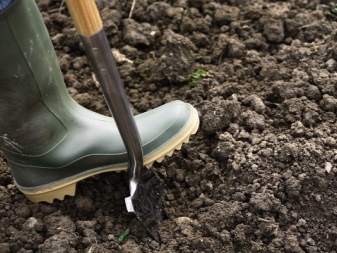
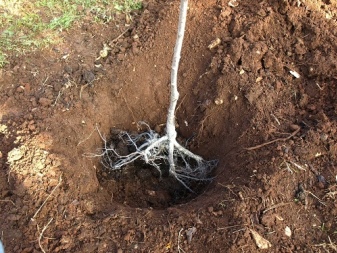
How to grow?
Growing healthy plums outdoors requires proper care.
Watering
First of all, the plants should be watered regularly. The frequency of watering depends entirely on how often it rains. Water the plums at the root. The soil must be well moistened. As a rule, under young trees are poured 5-10 buckets of water.
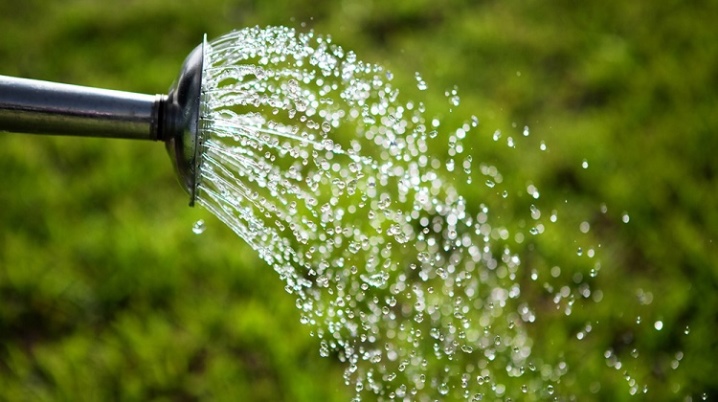
Pruning
This process is also important for plums growing in the garden. You can prune branches in spring or autumn. In the first case, it is important to be in time before the start of sap flow, in the second - before frost. Formative pruning is recommended in the spring. Plants begin to prune in the second year of life. In the first few years after planting, the tree grows very quickly, so it is quite easy to form a beautiful crown.
In the second year, the gardener needs to form the lower tier. It consists of 5-6 skeletal branches. They should be at the same distance from each other. The branches that are higher are shortened by a third of the length. The conductor should also be shortened during the trimming process. In the third year after planting, the plant also needs pruning. At this time, the conductor is shortened by 30 centimeters. Young branches and side shoots are also recommended to be cut. It is in the third year that the formation of the second tier of the crown occurs. Skeletal branches should be 0.3 meters from the lower shoots.
A year later, the guide is shortened again. At this stage, all skeletal branches should be 6 buds shorter than it. After trimming the conductor and skeletal branches, all lateral shoots must be shortened. At this stage, the crown formation process is complete. In the future, plants need pruning only to stimulate the growth of new branches, as well as to improve fruiting. It is usually carried out in the fall. In summer, only diseased shoots are removed.
It is very important to only trim the plants with a sharp garden tool. All cuts must be processed with garden pitch. After the end of the procedure, the instruments must be disinfected. Especially if the pruning of diseased plants was carried out.
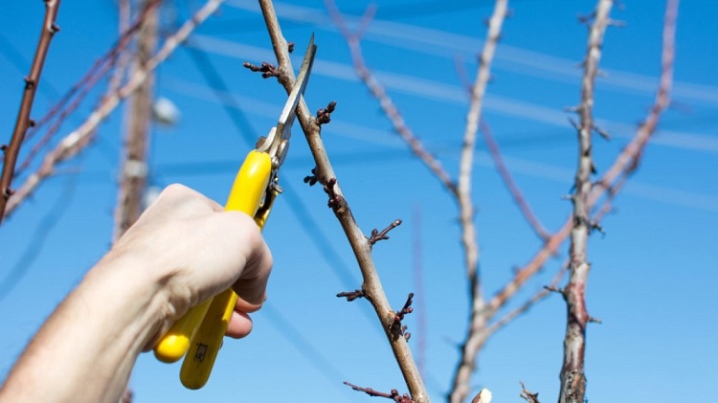
Fertilizer
Timely feeding is important for plums. Fertilization allows you to speed up the process of tree growth, as well as increase its yield... Organic fertilizers are usually applied to the soil every 4 years. Mineral - once every 2 years. It is best to feed the plum with nitrogen fertilizers in the spring. This will speed up the process of kidney formation.In the fall, phosphorus and potassium fertilizers are introduced into the soil. During fertilization, the gardener also needs to loosen the soil in the trunk circle and remove weeds from there.
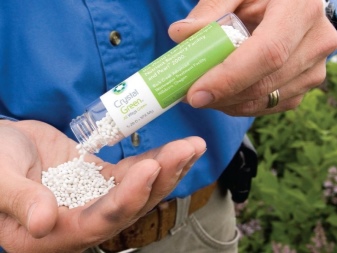
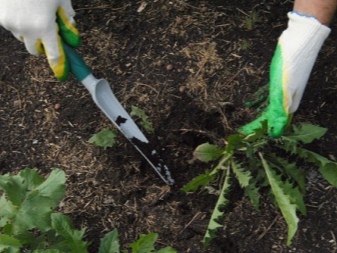
Preparing for winter
In order for the plants to quickly recover after winter, they need to be properly prepared for the cold in the fall. After harvesting, the plums are pruned, removing all old and weak branches. The sections are carefully covered with garden pitch, and the trunk is whitewashed. For the winter, trees are watered abundantly. This hardens them.
An adult tree may well do without shelter.... But some gardeners mulch the tree trunk circle with humus or peat. But for the winter, it is advisable to wrap young trees with sacking or tie them with spruce branches. It is not recommended to use artificial materials for covering drains.

Diseases and pests
Plums grown in the country are often attacked by various pests. In the spring, the tree is attacked by ticks, aphids, and also scale insects. You can protect the plum from these insects by using insecticides for spraying. When the tree is in bloom, it is often attacked by sawflies. To protect the site from these parasites, the plant should be re-treated with insecticides in the second half of spring. To facilitate the fight against insects, you can take advantage of their natural enemies. To do this, it is worth attracting birds to the garden plot. Gardeners usually hang troughs in different places. Having got used to getting food in the garden, in spring and summer birds will be happy to destroy pests that settle on trees.
There are also a number of diseases that pose a risk to plums.
- Clasterosporium disease... This is a common fungal disease that affects foliage and branches. Infected plums develop dark spots on the leaves. Over time, the fruits are also affected. This leads to the complete destruction of the crop. To prevent infection of the area, the branches affected by the disease must be cut and burned. After that, the tree can be treated with Bordeaux mixture.
- Moniliosis... This disease is also fungal. It affects not only foliage, but also flowers, fruits, and plum branches. It is impossible to fight this disease. The affected branches must be removed and burned. The tree should be sprayed with copper oxychloride or Bordeaux mixture. This can be done only after the end of the plum flowering.
- Gommoz... This condition is also known as gum flow. In affected trees, small cracks appear on the trunk, from which a transparent resin flows. The branches of the affected plant dry up. The tree itself dies over time. For the treatment of gommosis, wounds need to be cleaned, and also treated with copper sulfate and petrolatum.
- Rust... This disease usually affects plants in July. The main signs of plum infection are the appearance of convex red spots on the foliage. Trees affected by such a disease are significantly weakened. It is impossible to fight rust. Diseased plants can only be removed. For prophylaxis, trees are recommended to be treated with copper oxychloride in the spring. In autumn, plums can be sprayed with Bordeaux mixture.
- Coccomycosis... Diseased plants also weaken. Purple or burgundy spots appear on the foliage, which only increase over time. In the future, the leaves fall off. The development of fruits stops, they dry up. It is impossible to fight this disease. Therefore, in the spring, plums need to be treated with a Bordeaux mixture.
If the prevention of these dangerous diseases is carried out in a timely manner, the tree will remain healthy and strong.


Harvesting
During the fruiting period, gardeners think about how to properly harvest plums. In the process, you need to adhere to the following rules.
- Harvesting is necessary only in dry weather. Wet plums will not last long.
- Do not wait until the fruits become very soft. Slightly unripe plums are best for long-term storage. The fruit must be healthy and intact.
- You need to pick the fruits very carefully.being careful not to damage the branches.
- Plucked fruits should be used immediately for conservation or placed in convenient storage trays. Do not wrinkle them in your hands for too long.
- Drain boxes must not be completely filled... No more than 3-4 layers are placed in one tray.
- Since plums do not ripen at one moment, it is best to pluck them in 2-3 doses.
- If the fruits had to be picked unripe, they just need to be kept out of the refrigerator for several days.... During this time, the plums will ripen. If you put them in the refrigerator right away, they will become completely tasteless.
Proper farming practices keep the plums in good condition all year round.
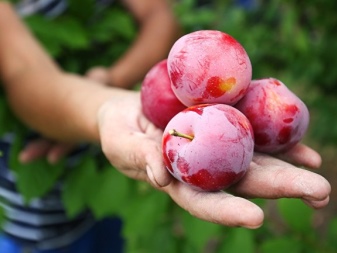












The comment was sent successfully.